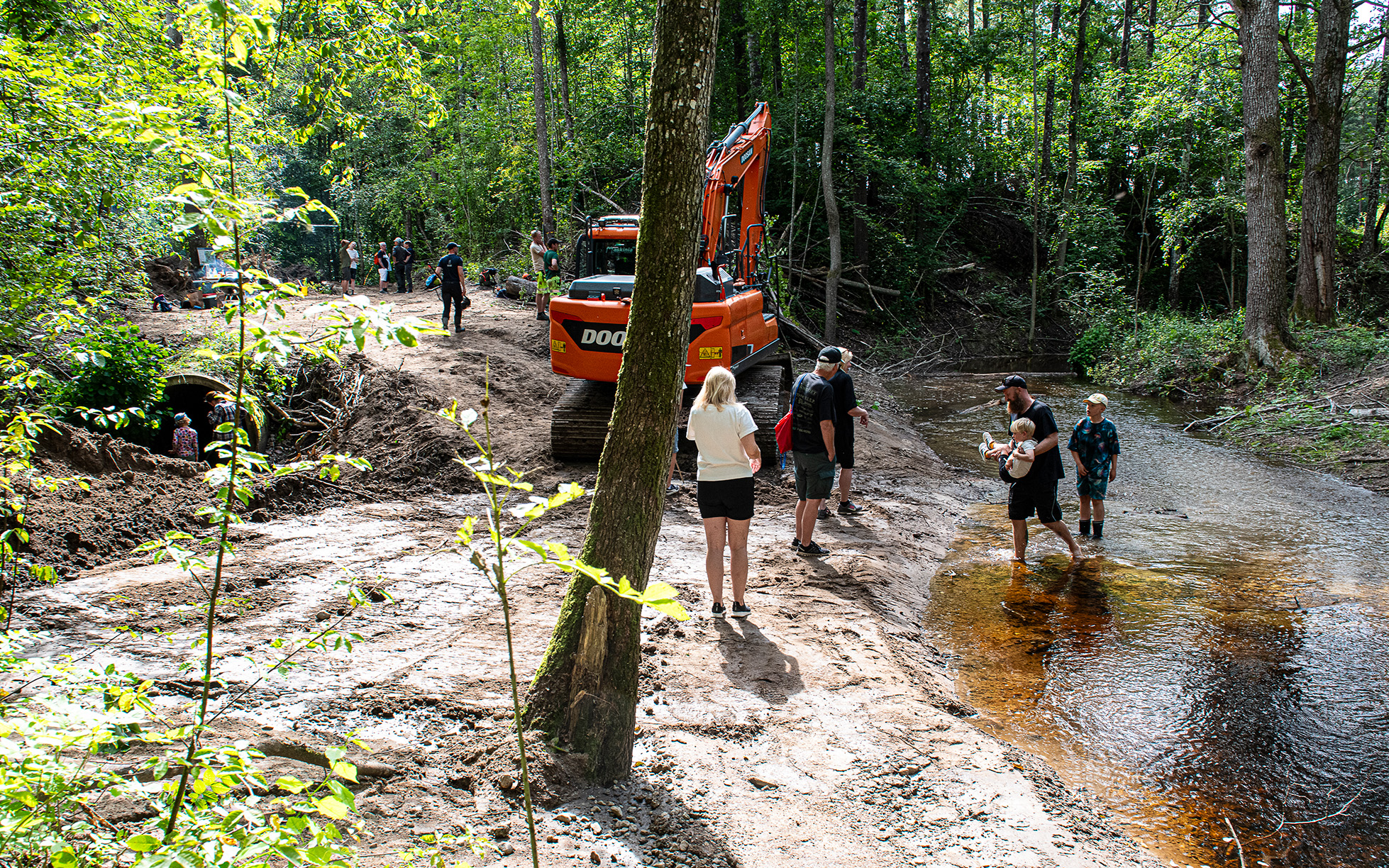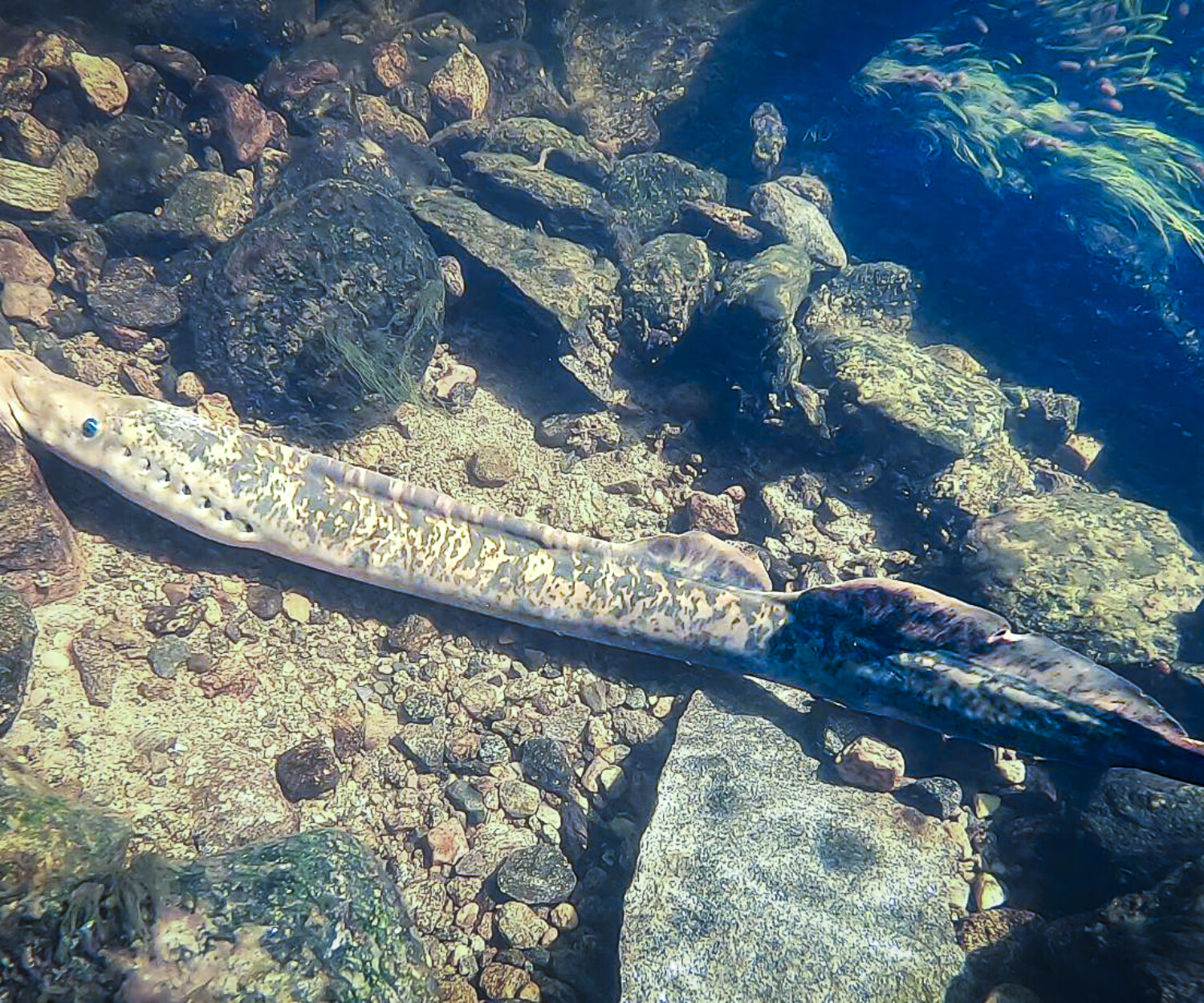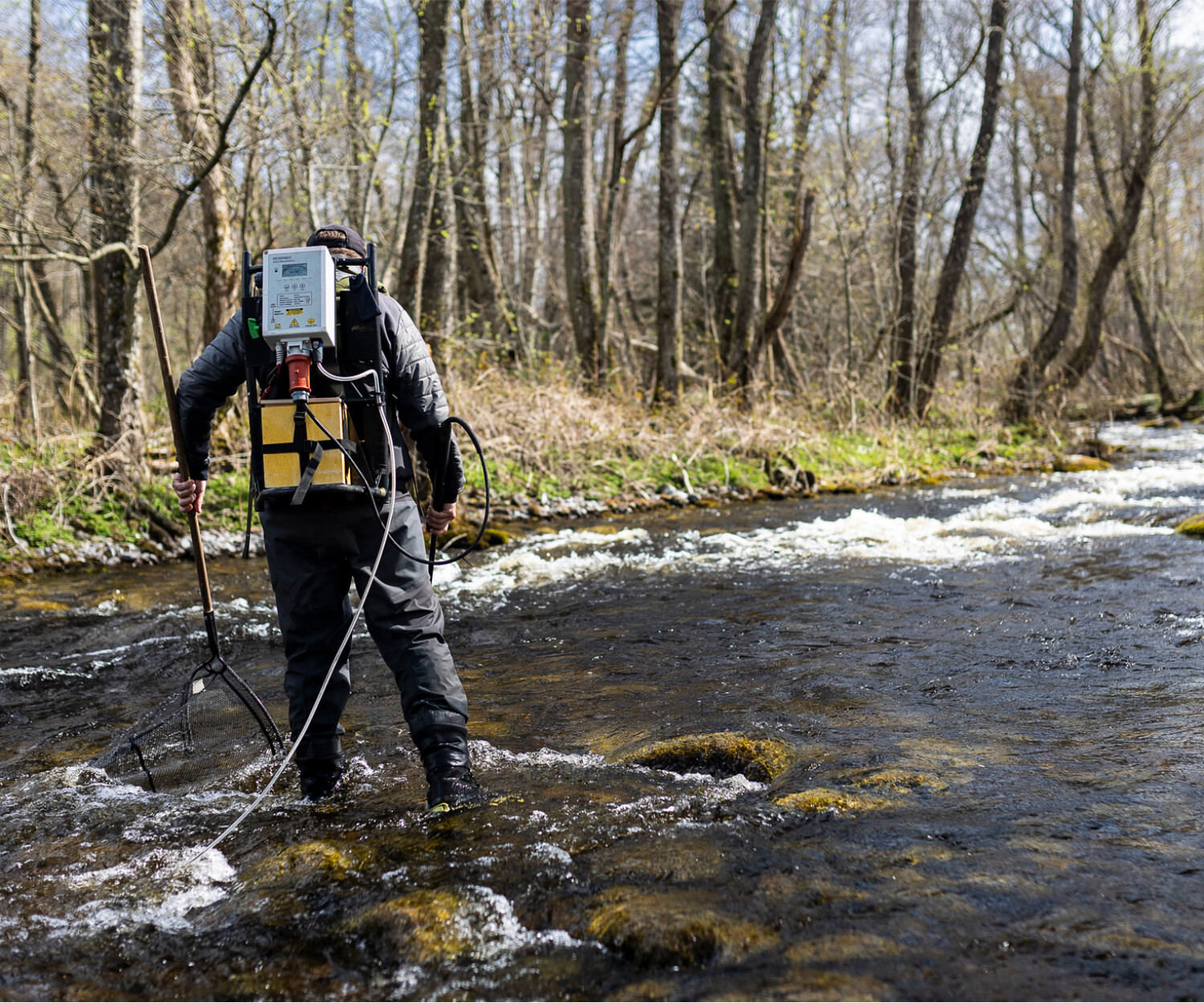Pjältån
Comprehensive improvements to the entire river
Between Kilaån and Motala ström, Pjältån flows through a rift valley landscape with deciduous forest, wetlands and occasionally flooded forest. Species such as brown trout, river lamprey, eel and bullhead are found here. The Pjältån is particularly important as a breeding ground for sea trout. Birds such as kingfishers and grey wagtail, as well as mammals such as otters, are also found in the area.
Three migration barriers, including old hydropower plants and mills that are no longer in operation, as well as a 60-meter culvert, will be removed to restore a more natural flow and connectivity. Floodplains will be restored on channelized stretches and habitats will be restored on a total of 74.6 hectares.
Pjältån is located in the northeastern part of Östergötland County in a landscape characterized by rift valleys and many lakes of varying sizes. Between Kilaån and Motala ström, Pjältån flows through a rift valley landscape with deciduous forest, wetlands and occasionally flooded forest.
Habitat and wetland restoration will be implemented on 74.6 hectares
The area includes Skriketorpsravinen, a nature reserve and Natura 2000 site, where the small watercourse Pjältån has cut deeply through thick layers of fine-grained sediment in the valley bottom. The ravine is varied with several smaller side ravines. Within the ravine grows broadleaf forest. The project area also includes Pjältåns mader, an area south of Skriketorpsravinen where the Pjältån flows through a landscape with wetlands and deciduous swamp forest.
Several important fish species
The River Pjältån is a small coastal watercourse with a rich biological life. The river is home to several important species, such as trout, river lamprey, eel and bullhead. Pjältån is considered to be the most important spawning area for sea trout in the county. Breeding birds include kingfishers and grey wagtail. There are also otters in the area.
Dry channel comes to life
The project will remove three partial migration barriers, which are former hydropower plants and mills. A 60-meter culvert will be removed, allowing the river to return to its natural channel, which is currently dry. Habitat and wetland restoration will be carried out on 74.6 hectares of land previously channelized for agriculture.
Stable system all the way to the sea
The aim is to recreate the a more natural planform (the course of the river) through the Skriketorp Gorge. This would increase and improve the habitat for aquatic species. A more natural course would also reduce ongoing erosion and sediment transport downstream. The aim for the stretches in question is to have a good ecological status reflected in natural stream habitats and high densities of
trout. The restoration is expected to have a large-scale positive effect on the Pjältån ecosystem, with increased biodiversity, improved fish production and a more stable hydrological system down to the sea.


Freshwater pearl mussel survival depends on host fish
Barriers to migration
Removing migration barriers and opening up the river pearl mussel’s host fish, salmon and trout, will increase the species’ ability to reproduce. Barriers to migration come in many forms, from natural to man-made dams and power plants. In some cases, a good solution may be to build a wildlife passage to allow fish and other organisms to bypass the migration barrier.
Pjältån
Latest news from the project area
Here you can read news about the target species and the actions being taken in the project area.




